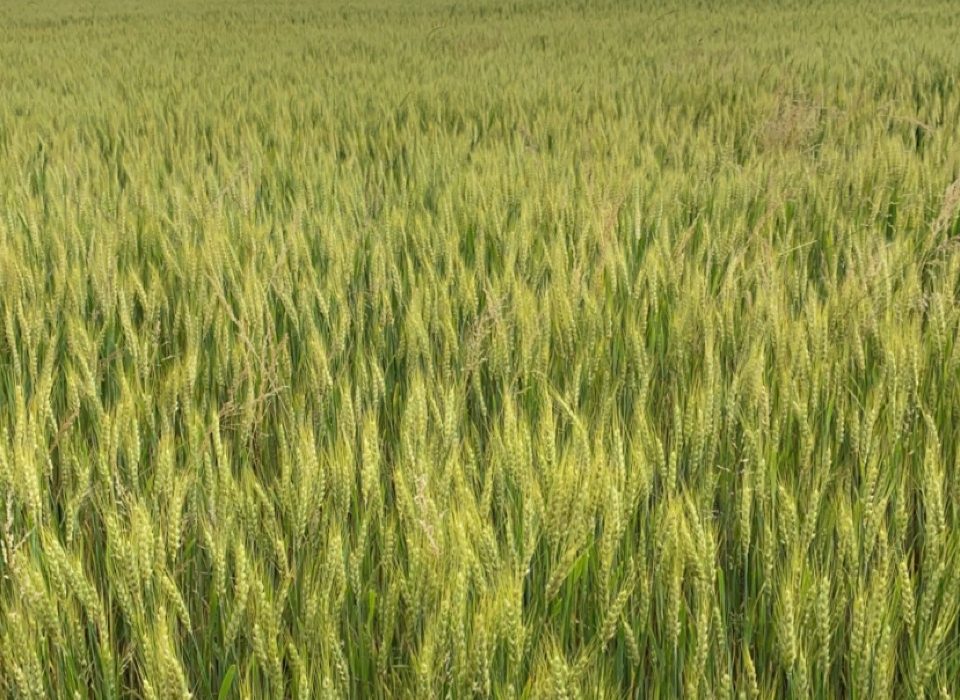Ohio State Researchers Look at Farm Practices, Soil Health in Stark County
Originally published by Farm and Dairy. Original article available here.
EAST CANTON, Ohio — Soil is the foundation for a wide range of agriculture in Stark County. And while fields in the county don’t have as obvious of an impact on local water quality as farms in Lake Erie watersheds, they do affect water quality downstream, and plant, animal and human health around them.
That’s why researchers at Ohio State University and Kent State University are working on the Stark Soil Health Initiative, a project seeking to understand how farm management affects soil health and carbon storage on small farms in Ohio.
Researchers are working with 12 farms in Stark County and have completed two years of the five-year project. They discussed results from the first two years in a March 4 town hall, in East Canton, Ohio.
“We’re stewards of the land,” said Cliff Linder, a Nimishillen Township farmer who participated in the project. “We need to look down the road of generations to come … I’m only here a short time. Somebody else is going to take over that farm, or whatever, so I want to leave it better than what I got.”
Soil health
Part of the reason researchers wanted to look at soil health, said Heather Neikirk, Ohio State University Extension agriculture and natural resources educator for Stark County, is the “One Health” concept — “The idea that healthy soils give us healthy plants, which provide for healthy animals and ultimately, healthy humans.”
Nutrient management issues have been a big topic across the state. The Ohio Department of Agriculture introduced an agricultural fertilizer applicator certificate a few years ago, aimed at combatting nutrient management issues. And while farm fields in Stark County don’t run off into Lake Erie watersheds, they do drain into the Ohio River and eventually into the Gulf of Mexico.
Stark County was a good place to look at soil health, in part because it has a lot of different types of farms, and quite a few of them are actively using conservation practices already, said Neikirk. The county is also similar to the state of Ohio as a whole since it has large urban areas, as well as suburban and rural areas.
Farmers involved in the project said it is helping them get a better sense of what their soil looks like, and where they can improve it. It is also showing them how things like the carbon in their soil change from year to year.
“We’re all here to try to do better next year,” said Kenny Blim, a Washington Township farmer.
Farms
The farms had several different types of crop rotations. For example, six used corn-soybean rotations. Two consistently grew hay on the fields sampled. One was an organic farm with a highly diverse crop rotation. Researchers also sampled two woodland sites. The farms used a range of tillage practices, and about half used manure for fertilizer while the other half did not.
“The main thing that sort of holds all the farms in the project together is the soil type,” said Kathleen Bridges, a post-doctoral scholar at Ohio State’s Carbon Management and Sequestration Center. “We were specifically trying to find out or understand how management was affecting soil, so we had to make sure that we were using the same soil type.”
The soil type researchers focused on was Canfield silt loam. One of the farms did not have the same soil type, so researchers did not include it in their analysis.
Carbon
The hay fields and the woodland sites had higher levels of carbon than cultivated fields. No till fields were slightly lower in carbon than the different types of tilled fields, though there wasn’t a significant difference, Bridges said.
“I was expecting and I have been taught that no till is the carbon savior … But that’s not what we’re seeing here,” she said.
That’s likely because farms in the project that tilled were replacing more of the carbon lost through manure, and incorporating that carbon deeper into the soil.
She noted carbon loss from cultivated fields might be more obvious if they were measuring runoff from a field, since tilled fields have more runoff.
In a recorded message to attendees, Rattan Lal, director of the Carbon Management and Sequestration Center, said working with farmers, the private sector and policy makers to apply research about farm management and carbon is important. If carbon markets grow and more farmers are interested in carbon as a commodity, it will be important to understand how farm practices affect carbon storage.
“Translating science into action is essential,” Lal said. “Otherwise, science has no meaning.”
Nutrients
Total nitrogen levels followed the same pattern as carbon — higher in woodlands and hay fields, and a little bit lower in other fields.
Phosphorus and potassium in the soil weren’t very different across all the different types of farms. The average for phosphorus was 29 parts per million — the recommended level for crop production. The average for potassium was lower than what is recommended, at about 88 parts per million.
Yields
Corn yields had a strong correlation with soil organic matter, but soybean yields did not seem to be connected to organic matter, Bridges said. Soybean yields did have a strong correlation with sulfur. There was also a negative relationship between organic matter and bulk density.
“This just tells us about the relationship between these two things. It doesn’t necessarily mean that they are cause and effect,” Bridges added.
Yields across all farms were higher in 2021 than 2020, but researchers said that was likely because the area got more rain in the summer months in 2021.
Researchers suggested vertical tillage might be a good option for farms in Stark County that have the Canfield silt loam soil type, since it helped farms that used it maintain their yields and soil qualities.

